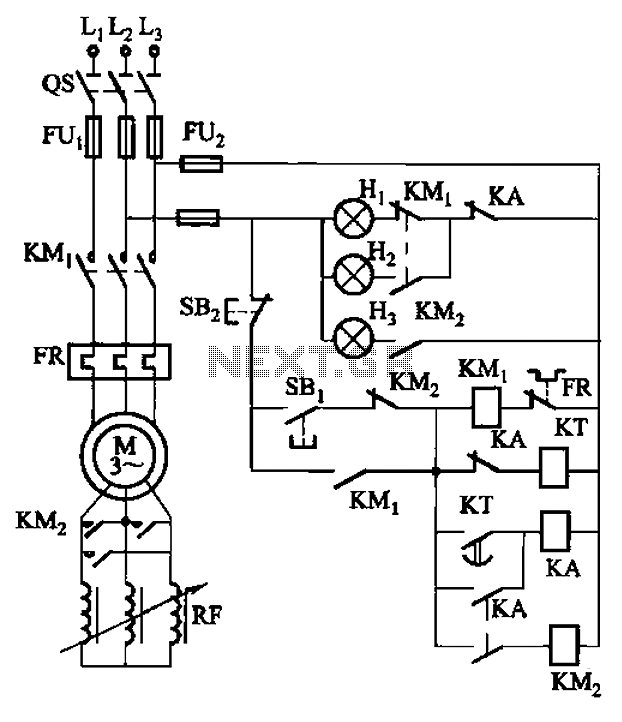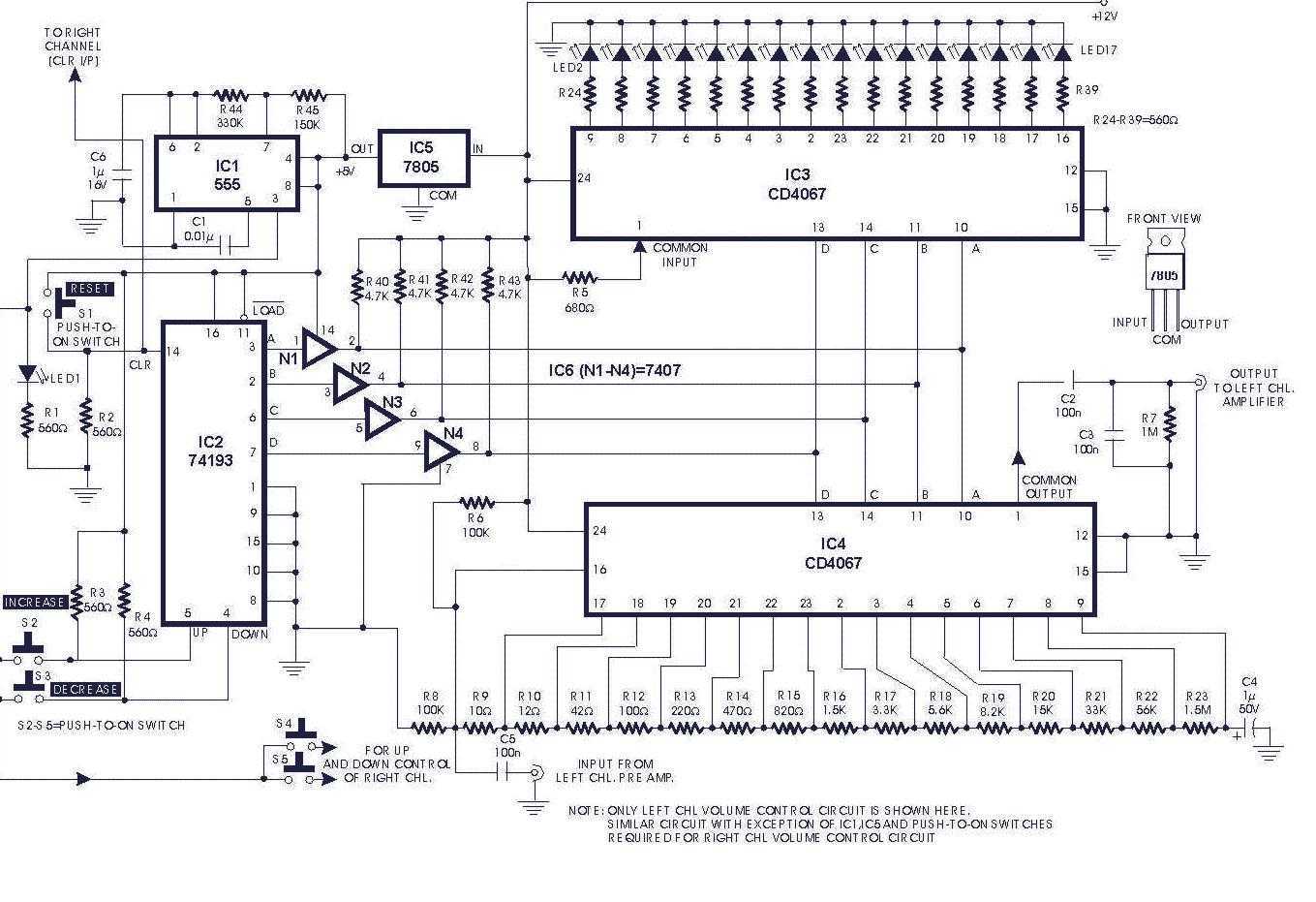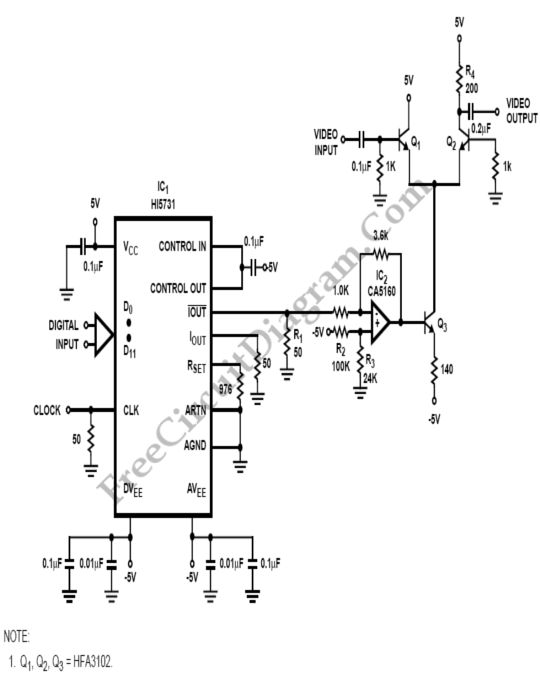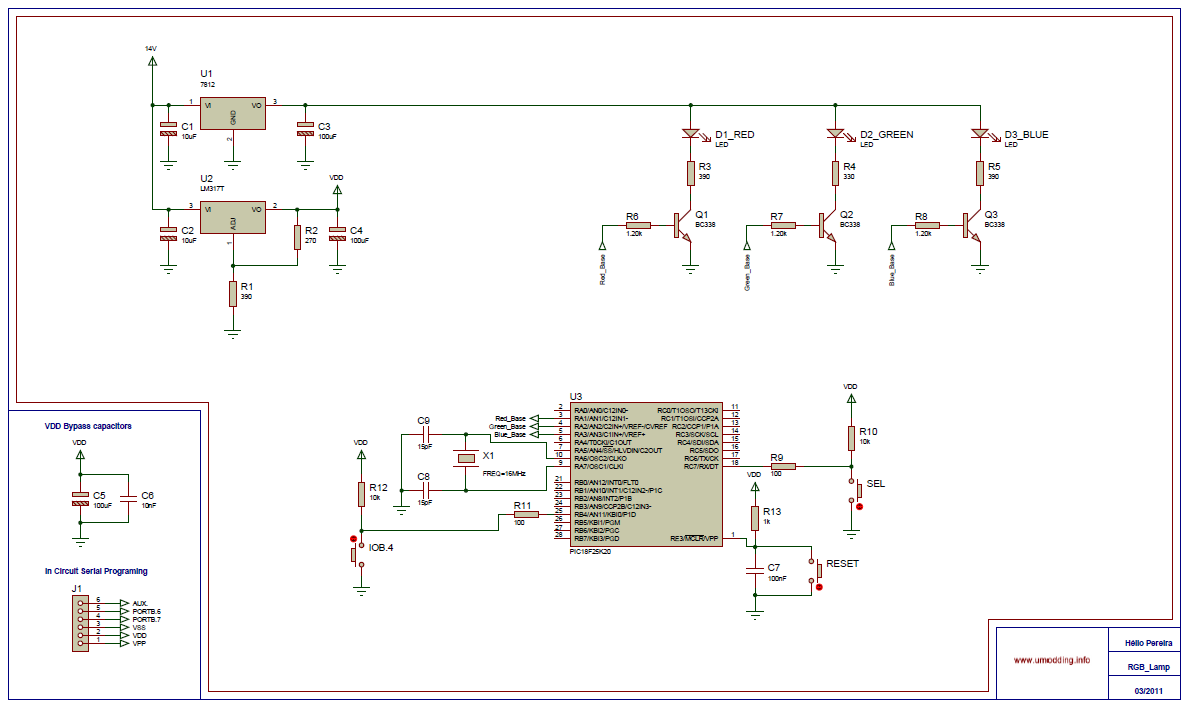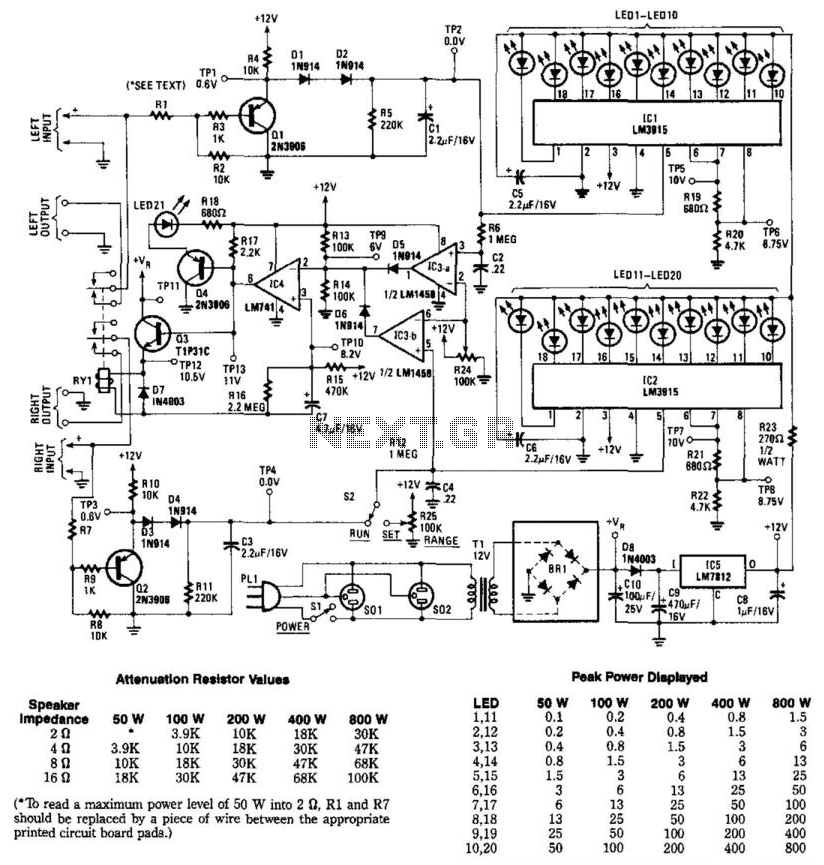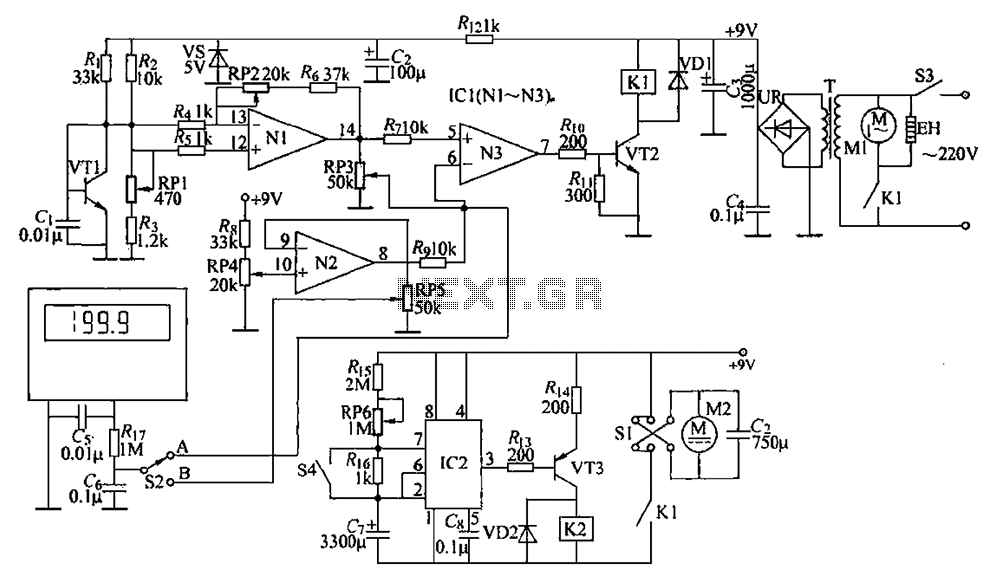
Stereo Tone Control using LM1036
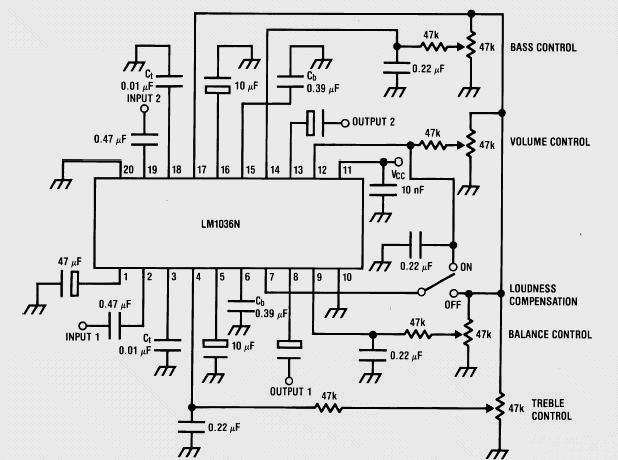
This weblog discusses electronic circuit schematics, PCB design, DIY kits, and electronic project diagrams. It features a stereo tone control circuit built using the LM1036 integrated circuit (IC). This control circuit adjusts bass, treble, volume, and the balance between the right and left audio channels (Input 1 and Input 2). It is suitable for stereo applications such as car radios, televisions, audio systems, MP3 players, DVD players, iPods, and more. An additional control input allows for simple loudness compensation. The circuit operates with a supply voltage of 9V to 15V DC. Each tone response is defined by a single capacitor chosen to achieve the desired characteristic. By changing the values of capacitors connected to the tone control unit, it is possible to manipulate bass and treble levels. Pin 3 and pin 18 of the IC are designated for treble control, while pins 6 to 15 are used for bass control.
The stereo tone control circuit utilizing the LM1036 IC is designed to enhance audio playback quality by allowing users to adjust sound characteristics to their preferences. The LM1036 is a dual-channel tone control IC that provides a versatile solution for audio applications. The circuit typically consists of a power supply section, tone control section, and output stage.
The power supply section should provide a stable DC voltage within the specified range of 9V to 15V. This can be achieved using a linear voltage regulator or a switching power supply, depending on the design requirements and efficiency considerations.
In the tone control section, the LM1036 IC is configured with external capacitors that define the frequency response for bass and treble adjustments. The choice of capacitors determines the cutoff frequencies for each tone control feature. Capacitors connected to pins 3 and 18 will influence the treble response, while those connected to pins 6 through 15 will affect the bass response. The values of these capacitors can be selected based on the desired tonal characteristics, allowing for customization of the audio output.
The volume control is typically implemented using a potentiometer, which adjusts the overall signal level before it reaches the output stage. The balance control can also be implemented using a dual-gang potentiometer, allowing for independent adjustment of the left and right channels.
The output stage may include additional amplification or buffering to drive speakers or headphones effectively. Proper grounding and layout considerations are essential to minimize noise and ensure high-quality audio performance.
This tone control circuit can be integrated into various audio systems, enhancing the listening experience by allowing users to tailor the sound to their liking. It is particularly useful in environments where audio quality is paramount, such as home theaters, car audio systems, and professional audio equipment.Welcome to the weblog where we discuss about electronic circuits schematics, PCB design, diy kits and electronic projects diagrams. This a stereo tone control circuit built using LM1036 IC. This control circuit bass / treble tone level, volume and balance between the right channel and left channel (Input 1 and 2).
You can use this circuit for ste reo applications such as car radio, television and audio systems, MP3 player, DVD player, ipod and more. An additional control input allows loudness compensation to be made simply. The circuit must be working with a supply voltage of 9V to 15V DC. Each tone response is defined by a single capacitor chosen to give the desired characteristic. By changing the values of capacitors connected to the tone control unit, you can control bass and treble levels.
pin 3 and pin 18 of IC are for acute and pin 6 to pin 15 for bass. 🔗 External reference
The stereo tone control circuit utilizing the LM1036 IC is designed to enhance audio playback quality by allowing users to adjust sound characteristics to their preferences. The LM1036 is a dual-channel tone control IC that provides a versatile solution for audio applications. The circuit typically consists of a power supply section, tone control section, and output stage.
The power supply section should provide a stable DC voltage within the specified range of 9V to 15V. This can be achieved using a linear voltage regulator or a switching power supply, depending on the design requirements and efficiency considerations.
In the tone control section, the LM1036 IC is configured with external capacitors that define the frequency response for bass and treble adjustments. The choice of capacitors determines the cutoff frequencies for each tone control feature. Capacitors connected to pins 3 and 18 will influence the treble response, while those connected to pins 6 through 15 will affect the bass response. The values of these capacitors can be selected based on the desired tonal characteristics, allowing for customization of the audio output.
The volume control is typically implemented using a potentiometer, which adjusts the overall signal level before it reaches the output stage. The balance control can also be implemented using a dual-gang potentiometer, allowing for independent adjustment of the left and right channels.
The output stage may include additional amplification or buffering to drive speakers or headphones effectively. Proper grounding and layout considerations are essential to minimize noise and ensure high-quality audio performance.
This tone control circuit can be integrated into various audio systems, enhancing the listening experience by allowing users to tailor the sound to their liking. It is particularly useful in environments where audio quality is paramount, such as home theaters, car audio systems, and professional audio equipment.Welcome to the weblog where we discuss about electronic circuits schematics, PCB design, diy kits and electronic projects diagrams. This a stereo tone control circuit built using LM1036 IC. This control circuit bass / treble tone level, volume and balance between the right channel and left channel (Input 1 and 2).
You can use this circuit for ste reo applications such as car radio, television and audio systems, MP3 player, DVD player, ipod and more. An additional control input allows loudness compensation to be made simply. The circuit must be working with a supply voltage of 9V to 15V DC. Each tone response is defined by a single capacitor chosen to give the desired characteristic. By changing the values of capacitors connected to the tone control unit, you can control bass and treble levels.
pin 3 and pin 18 of IC are for acute and pin 6 to pin 15 for bass. 🔗 External reference
Warning: include(partials/cookie-banner.php): Failed to open stream: Permission denied in /var/www/html/nextgr/view-circuit.php on line 713
Warning: include(): Failed opening 'partials/cookie-banner.php' for inclusion (include_path='.:/usr/share/php') in /var/www/html/nextgr/view-circuit.php on line 713
